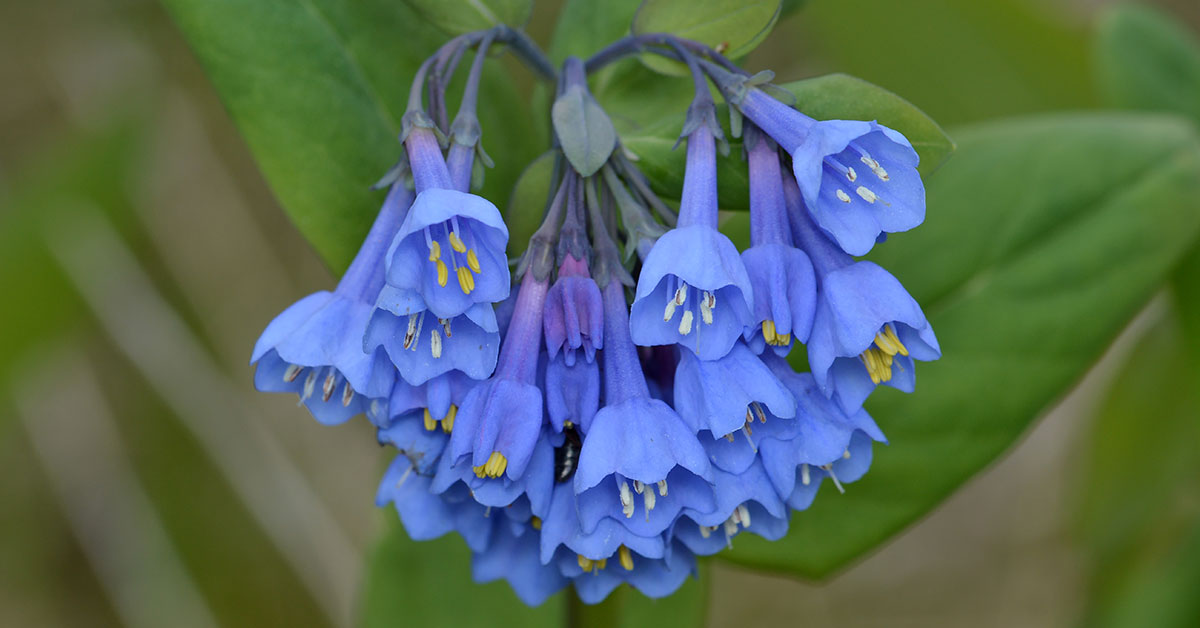
Virginia Bluebells, scientifically known as Mertensia virginica, are a species of spring-blooming wildflowers native to eastern North America. These enchanting blue-hued beauties are a symbol of the changing seasons, as they burst into bloom during the early spring months. Virginia Bluebells are highly sought-after by gardeners and nature enthusiasts for their delicate flowers and unique characteristics. In this article, we will explore 12 fascinating facts about Virginia Bluebells that will leave you in awe of their charm and wonder. From their distinct appearance to their ecological significance, these facts will provide you with a deeper understanding and appreciation for these captivating wildflowers. So, let’s dive into the world of Virginia Bluebells and uncover their fascinating secrets!
Key Takeaways:
- Virginia Bluebell is a stunning native wildflower with vibrant blue blossoms that attract pollinators. It symbolizes spring and is deer-resistant, making it a versatile and captivating addition to any garden.
- This herbaceous perennial has a unique color transformation and plays a vital role in ecological restoration. It thrives in moist woodlands, making it a valuable and mesmerizing plant for nature enthusiasts.
Vibrant Blue Blossoms
Virginia Bluebell, scientifically known as Mertensia virginica, is renowned for its beautiful, vibrant blue flowers. These bell-shaped blossoms grace the plant in early spring, creating a stunning display of color in gardens and woodlands.
Native to Eastern North America
The Virginia Bluebell is a native wildflower found primarily in the eastern regions of North America. It can be spotted in woodlands, meadows, and along stream banks, thriving in moist and shaded areas.
Unique Color Transformation
One of the most fascinating features of Virginia Bluebell is its color-changing ability. The flowers start as pinkish buds, gradually transforming into a brilliant sky-blue hue. Over time, the color fades to lavender or pink, creating a mesmerizing spectacle.
Attracts Pollinators
The bell-shaped flowers of Virginia Bluebell attract various pollinators, including bees, butterflies, and hummingbirds. The nectar-rich blossoms provide a vital food source for these creatures, aiding in their survival and supporting local ecosystems.
Symbol of Spring
The emergence of Virginia Bluebell is often seen as a sign of spring. Their arrival signifies the end of the cold winter season and the beginning of warmer days ahead. Gardeners and nature enthusiasts eagerly anticipate the blooming of these delicate blue flowers.
Herbaceous Perennial
Virginia Bluebell is classified as an herbaceous perennial, meaning it has a life cycle lasting multiple years. It grows from a small underground rhizome and produces new leaves and flowers each spring.
Deer-Resistant Plant
Unlike many other garden plants, Virginia Bluebell is generally resistant to deer browsing. This makes it an ideal choice for those living in areas with deer populations, as it is less likely to be eaten or damaged by these animals.
Naturalizes Easily
Virginia Bluebell has a naturalizing tendency, meaning it can readily spread and establish colonies in suitable growing conditions. This makes it a great choice for naturalistic or woodland gardens, where it can create beautiful patches of blue blooms.
Medicinal and Culinary Uses
Throughout history, Virginia Bluebell has had various medicinal and culinary uses. Native American tribes used the plant for its diuretic properties and to treat skin ailments. Some adventurous cooks also incorporate the flowers into salads or use them as a garnish.
Temporary Dormancy
After blooming in spring, Virginia Bluebell undergoes a temporary period of dormancy. The foliage withers and disappears by early summer, leaving behind only the dormant rhizome underground until the next growing season.
Hardy in USDA Zones 3-8
Virginia Bluebell is well-suited to a wide range of climates and is considered hardy in USDA zones 3-It can tolerate both cold winters and hot summers, making it a versatile choice for gardeners across a large portion of North America.
Plays a Role in Ecological Restoration
Virginia Bluebell plays a vital role in ecological restoration projects. Its ability to thrive in moist woodlands and streamside habitats makes it an important component in efforts to restore and conserve natural ecosystems.
In conclusion, the 12 Fascinating Facts About Virginia Bluebell highlight its unique qualities as a native wildflower, from its stunning blue blossoms to its ecological significance. With its mesmerizing color transformation and ability to attract pollinators, this herbaceous perennial is a symbol of spring and a valuable addition to any garden. Whether you appreciate its naturalizing tendency or its resistance to deer browsing, Virginia Bluebell is a versatile and captivating plant. So, why not consider adding this enchanting wildflower to your garden and enjoy the beauty it brings every spring?
Conclusion
In conclusion, Virginia Bluebell is a truly fascinating plant with unique characteristics and a rich history. From its vibrant blue flowers to its ability to thrive in woodland environments, this native North American plant is a beautiful addition to any garden or natural landscape. Its intriguing life cycle, medicinal properties, and ecological role make it a subject of great interest for plant enthusiasts and nature lovers alike. By understanding and appreciating the many wonders of Virginia Bluebell, we can deepen our connection to the natural world and continue to protect and preserve this remarkable plant for future generations.
FAQs
1. What are some other common names for Virginia Bluebell?
Virginia Bluebell is also known as Mertensia virginica, Virginia cowslip, and lungwort.
2. Can Virginia Bluebell grow in different types of soil?
Yes, Virginia Bluebell can thrive in a variety of soil types, including clay, loam, and sandy soils. However, it prefers moist, well-draining soil.
3. How tall does Virginia Bluebell grow?
Virginia Bluebell typically grows to a height of 1 to 2 feet (30 to 60 centimeters).
4. When does Virginia Bluebell bloom?
Virginia Bluebell blooms in the spring, usually from April to May, and displays clusters of beautiful bell-shaped flowers.
5. Is Virginia Bluebell a perennial or an annual plant?
Virginia Bluebell is a perennial plant, meaning it lives for more than two years. It grows from seeds and can self-seed to create new plants.
6. Does Virginia Bluebell attract pollinators?
Yes, Virginia Bluebell is known to attract pollinators such as bees and butterflies with its nectar-rich flowers.
7. Can Virginia Bluebell be grown in containers?
Yes, Virginia Bluebell can be grown in containers as long as the container is large enough to accommodate its root system and provides adequate drainage.
8. Can Virginia Bluebell be propagated by division?
Virginia Bluebell is not easily propagated by division as it has a delicate root system. It is best propagated from seeds.
9. Are Virginia Bluebell flowers edible?
While Virginia Bluebell flowers are not toxic, they are not typically consumed as they are not considered a culinary delight.
10. Is Virginia Bluebell a threatened species?
Virginia Bluebell is not currently considered a threatened species. However, its habitat is at risk due to habitat destruction and invasive species. Conservation efforts are essential for its long-term survival.
11. Can Virginia Bluebell be grown in full sun?
Virginia Bluebell is best grown in partial shade or filtered sunlight. It prefers woodland environments where it receives dappled sunlight.
12. Are there cultivars of Virginia Bluebell available?
Yes, there are some cultivars of Virginia Bluebell available, such as ‘Rosea’ with pink flowers and ‘Alba‘ with white flowers.
Exploring nature's wonders doesn't stop with Virginia Bluebells. Dive into the fascinating world of wildflowers, each with its unique beauty and charm. Discover the vibrant blooms of Yellow Loosestrife, a hardy perennial plant that adds a splash of color to any garden. Uncover the secrets of Compass Plants, native species that have guided travelers for centuries. Embark on a journey through the captivating realm of flora and expand your knowledge of the incredible diversity that surrounds us.
Was this page helpful?
Our commitment to delivering trustworthy and engaging content is at the heart of what we do. Each fact on our site is contributed by real users like you, bringing a wealth of diverse insights and information. To ensure the highest standards of accuracy and reliability, our dedicated editors meticulously review each submission. This process guarantees that the facts we share are not only fascinating but also credible. Trust in our commitment to quality and authenticity as you explore and learn with us.


